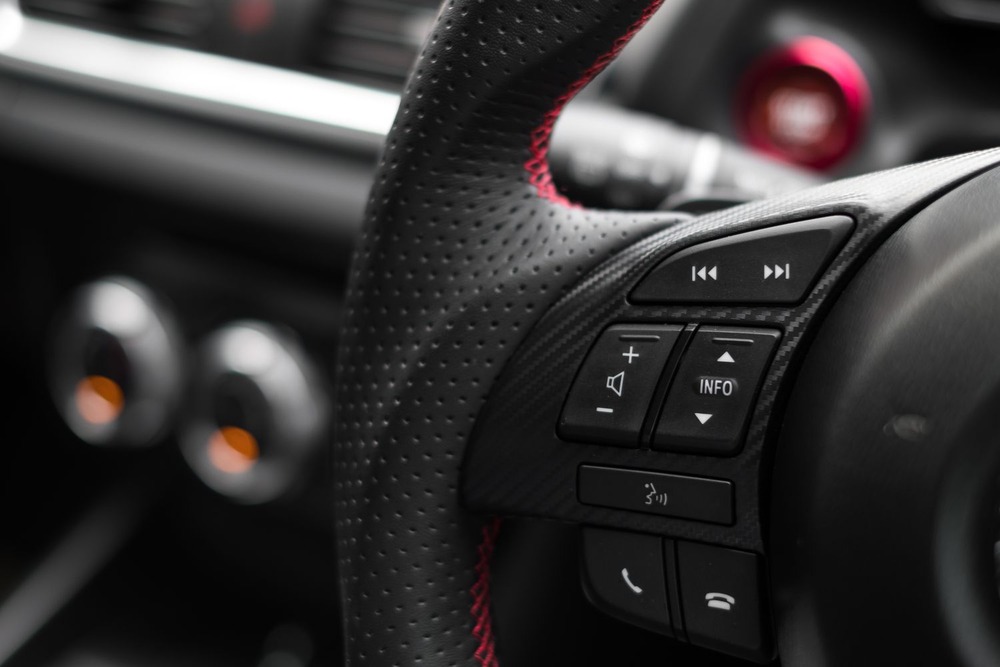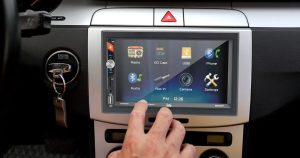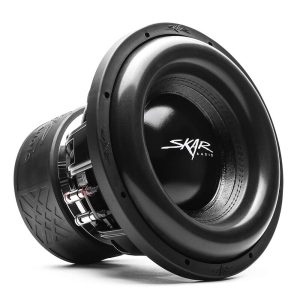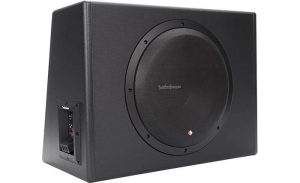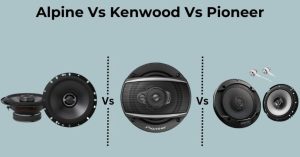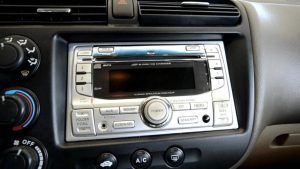Steering wheel audio controls have become a staple in modern vehicles, offering drivers a convenient way to manage their car stereo without taking their hands off the wheel. But are these controls truly essential for your car stereo setup? Let’s dive into the benefits, drawbacks, and practical considerations of steering wheel audio controls to help you decide if they’re a must-have for your driving experience. This guide explores safety, convenience, compatibility, and installation tips to give you a clear picture of their value.
Contents
- What Are Steering Wheel Audio Controls?
- Why Steering Wheel Audio Controls Matter
- Are There Any Downsides?
- Do You Really Need Steering Wheel Audio Controls?
- How to Add Steering Wheel Audio Controls to Your Car
- Tips for Choosing the Right Steering Wheel Control Adapter
- Alternatives to Steering Wheel Audio Controls
- The Future of Steering Wheel Controls
- Final Thoughts
What Are Steering Wheel Audio Controls?
Steering wheel audio controls refer to buttons or switches mounted on a vehicle’s steering wheel, allowing drivers to adjust the car stereo’s functions. These controls typically manage volume, track selection, radio station changes, and sometimes hands-free calling or voice assistant activation. By integrating these features into the steering wheel, manufacturers aim to enhance driver safety and convenience.
Most modern cars come equipped with factory-installed steering wheel controls. However, if you’re upgrading to an aftermarket stereo or driving an older vehicle, you might need a steering wheel control adapter to maintain or add this functionality. These adapters translate signals from the steering wheel buttons to commands the new stereo can understand, ensuring seamless integration.
Why Steering Wheel Audio Controls Matter
Steering wheel audio controls offer several compelling advantages that make them a popular feature. Let’s break down the key reasons drivers value them.
Boost Safety on the Road
Safety remains a top priority for drivers, and steering wheel audio controls play a significant role in reducing distractions. Adjusting the radio or skipping a song on a traditional stereo often requires reaching for the dashboard, which pulls your hands off the wheel and eyes off the road. According to the National Highway Traffic Safety Administration, distracted driving contributes to thousands of accidents annually. Steering wheel controls minimize this risk by letting you manage audio settings with a quick press of a button, keeping your focus where it belongs—on driving.
Enhance Convenience
Imagine cruising down the highway, wanting to lower the volume or switch to a new playlist. With steering wheel controls, you can make these adjustments instantly without fumbling for the stereo. This convenience shines in heavy traffic or challenging road conditions, where even a brief distraction can feel risky. For commuters or long-distance drivers, these controls streamline the driving experience, making it more enjoyable and less stressful.
Improve Accessibility
Steering wheel audio controls also cater to drivers with limited mobility. Reaching for a dashboard stereo can be challenging for some, but steering wheel buttons provide an accessible alternative. This feature ensures everyone can enjoy their car’s audio system with ease, promoting inclusivity on the road.
Add a Modern Touch
Let’s face it—steering wheel controls feel sleek and modern. They align with the tech-savvy vibe of today’s vehicles, complementing features like Bluetooth connectivity and touchscreen displays. For car enthusiasts or those upgrading their ride, these controls add a polished, high-tech aesthetic to the driving experience.
Are There Any Downsides?
While steering wheel audio controls offer clear benefits, they’re not without drawbacks. Understanding these challenges helps you weigh their importance for your car stereo setup.
Compatibility Issues
If you’re installing an aftermarket stereo, compatibility can be a hurdle. Not all stereos work seamlessly with factory steering wheel controls, requiring a specific adapter. These adapters vary by vehicle make, model, and stereo brand, and finding the right one demands research. For example, a 2015 Honda стать
Installation Complexity
Installing a steering wheel control adapter isn’t always a plug-and-play process. The process often involves wiring, programming, and testing to ensure the controls work correctly. While DIY enthusiasts with automotive experience can tackle this, others may need professional help, adding to the cost. A professional installation can range from $50 to $150, depending on the vehicle and stereo system.
Added Cost
Speaking of cost, steering wheel control adapters and installation can increase the overall expense of upgrading your car stereo. Adapters typically cost between $40 and $100, and that’s before labor charges. For budget-conscious drivers, this extra expense might not seem worth it, especially if you rarely use audio controls.
Maintenance and Reliability
Like any electronic component, steering wheel controls can wear out or malfunction over time. Buttons may become unresponsive, or wiring issues can arise, requiring troubleshooting or repairs. Regular maintenance, such as cleaning the buttons and checking connections, can help, but these tasks add to the upkeep of your vehicle’s audio system.
Do You Really Need Steering Wheel Audio Controls?
Deciding whether steering wheel audio controls are essential depends on your driving habits, preferences, and budget. Here’s a quick guide to help you decide:
- You might need them if: You frequently adjust your stereo while driving, value safety, or want a modern, convenient setup. They’re especially useful for commuters, parents, or anyone who spends significant time on the road.
- You might skip them if: You rarely change audio settings, drive an older vehicle without factory controls, or want to keep costs low. If you’re comfortable reaching for the stereo, the added expense might not justify the benefits.
How to Add Steering Wheel Audio Controls to Your Car
If your vehicle doesn’t have steering wheel controls or you’re upgrading to an aftermarket stereo, you can still enjoy this feature. Here’s a step-by-step guide to get started, based on insights from Auto Stereo Guide and other trusted sources.
Step 1: Choose a Compatible Adapter
Research steering wheel control adapters compatible with your vehicle’s make, model, and year, as well as your aftermarket stereo. Popular options include the Axxess ASWC-1, iDatalink Maestro, and PAC SWI-RC. Check manufacturer specifications or consult a retailer like Crutchfield, which offers compatibility tools to simplify the process.
Step 2: Gather Tools and Materials
You’ll need basic tools like a screwdriver, wire stripper, crimper, and electrical tape. Some installations require soldering for secure connections, though Posi-Products connectors can simplify wiring. Ensure you have the adapter kit, wiring harnesses, and your vehicle’s user manual for reference.
Step 3: Remove the Factory Stereo
Carefully remove your car’s factory stereo using stereo removal tools or a screwdriver, depending on your vehicle. Disconnect the wiring harnesses and set the stereo aside. Refer to your vehicle’s manual for specific instructions, as the process varies by make and model.
Step 4: Connect the Wiring
Match the adapter’s wiring harness to the stereo’s harness, using the provided wiring diagram. Connect the steering wheel control wires from your vehicle to the adapter, ensuring secure connections with crimps or solder. Double-check the wiring diagram to avoid mistakes, as incorrect connections can cause malfunctions.
Step 5: Program the Adapter
Some adapters require programming to recognize your vehicle’s steering wheel commands and translate them to the stereo. Follow the adapter’s instructions, which may involve using a website or software to select your vehicle’s details. Test each button to confirm it performs the correct function, like volume up or track skip.
Step 6: Test and Troubleshoot
Reinstall the stereo, reconnect the battery, and turn on your vehicle. Test all steering wheel controls to ensure they work as expected. If issues arise, check connections, consult the adapter’s manual, or contact customer support. For persistent problems, a professional installer can diagnose and fix complex issues.
Step 7: Enjoy Your Upgraded Setup
Once everything works, enjoy the convenience of controlling your stereo from the steering wheel. Keep the adapter’s manual handy for future reference, and perform occasional maintenance to keep the system in top shape.
Tips for Choosing the Right Steering Wheel Control Adapter
Not all adapters are created equal, so consider these factors when shopping:
- Compatibility: Ensure the adapter works with both your vehicle and stereo. Check for specific brands like Pioneer, Sony, or Kenwood, as some adapters are brand-specific.
- Features: Look for advanced features like customizable button mapping, Bluetooth support, or voice command integration for added functionality.
- Ease of Installation: Opt for adapters with clear instructions or plug-and-play designs if you’re installing it yourself.
- Reviews: Read user reviews on sites like Amazon or Crutchfield to gauge reliability and performance.
Alternatives to Steering Wheel Audio Controls
If steering wheel controls aren’t for you, other options can enhance your car stereo experience:
- Voice Commands: Many modern stereos support voice assistants like Siri or Google Assistant, letting you control audio hands-free.
- Remote Controls: Some stereos come with wireless remotes you can mount near the steering wheel, though they may require line-of-sight.
- Touchscreen Interfaces: A stereo with a responsive touchscreen can reduce the need for physical buttons, though it still requires glancing away from the road.
The Future of Steering Wheel Controls
As automotive technology evolves, steering wheel controls are becoming more sophisticated. Innovations like curved LCD screens, heart rate monitoring, and hands-off detection are emerging, as noted by CarParts.com. These advancements could make steering wheel controls even more integral to the driving experience, blending audio control with other vehicle functions like navigation and climate control.
Final Thoughts
Steering wheel audio controls aren’t a necessity, but they offer undeniable benefits in safety, convenience, and accessibility. For drivers who value a seamless, modern audio experience, they’re a worthwhile addition. However, compatibility challenges, installation costs, and maintenance needs may sway some toward simpler setups. By weighing your driving needs and exploring adapter options, you can decide if these controls deserve a spot in your car stereo system.
Ready to upgrade your car audio? Check out trusted retailers like Crutchfield or Auto Stereo Guide for adapters and installation tips. Have questions or tips about steering wheel controls? Share them in the comments below!
